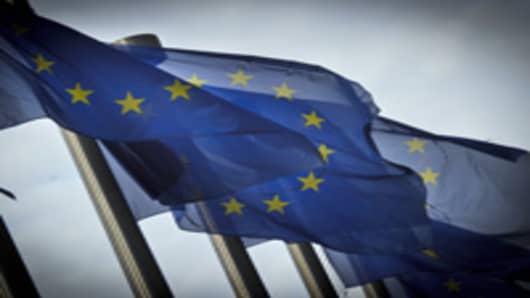Market expectations are running so high for the European Central Bank’s meeting Thursday, that it can only disappoint.
The Fed Wednesday opened the door wider for another round of quantitative easing, after its two day meeting. As expected, it took no action but noted that the economy had decelerated. It also strengthened the language on future easing, by replacing a phrase that said it “was prepared” to act with the more assertive comment that it “will provide additional accommodation as needed.”
Now it’s the European Central Bank’s turn. Its rate meeting ends at 7:45 a.m. ET, and it holds a press briefing at 8:30 a.m., in the hour ahead of the Wall Street open.
“I think that no matter what they do, they are going to disappoint the market,” said Brown Brothers Harriman chief currency strategist Marc Chandler. “The policy makers don’t make a decision unless they have to.”
European Central Bank President Mario Draghi fired up expectations last week that some major developments might come from the regularly scheduled meeting when he said the ECB would do whatever can within its mandate to support the euro.
That led to speculation that the ECB could buy more sovereign debt, relaunch the LTRO liquidity program for banks, or cut rates. It was also reported that he was speaking to other ECB officials about giving the bailout fund banking status so it could deal directly with banks, a plan that has not met support from Germany.
Chandler said the ECB could change the collateral rules, allowing banks to hold more sovereign debt, or it could cut the refi rate. “The other thing they’ll probably announce is resuming the bond purchases,” Chandler said. Purchases of Italian and Spanish bonds could help lower borrowing costs for those countries.
Stocks closed lower Wednesday, but recovered from deeper losses that came right after the Fed’s 2:15 p.m. ET announcement. The Dow was down 37, at 12,971, and the S&P was down 4 at 1,375. The Nasdaq fell 19 to 2,920.
“There was initial disappointment. The market fell six points on the S&P and then bounced back,” said John Canally, economist investment strategist at LPL Financial.
“The Fed will act,” he added. Clearly, some investors were expecting the Fed to announce quantitative easing, or another bond purchase program, but most Fed watchers had expected the Fed to analyze more data before doing so in September, at the earliest.
“We believe today's statement reinforces the case for more asset purchases at the September meeting. Such action is far from a done deal, but we are skeptical that the labor market will convincingly turn around, and so continue to see more asset purchases coming next month,” J.P. Morgan economist Michael Feroli wrote in a note.
Canally also expects the ECB to announce a bond purchase program. Draghi’s comments last week drove stocks sharply higher. “I think they spoke really loudly last week, and if there’s no follow up, there’s going to be disappointment in a major way,” he said.
After the ECB, market focus will quickly turn to Friday’s July nonfarm payrolls, expected at about 100,000, and also on the weekly jobless claims, released Thursday at 8:30 a.m. Besides claims, factory orders are expected at 10 a.m., and monthly chain stores sales are announced by retailers throughout the morning.
Earnings are expected Thursday from General Motors, Sony, Apache, Clorox, DirecTV, Duke Energy, Time Warner Cable, Kellogg, Parker-Hannifin, Teva, Rowan Cos, and Beam, before the bell. AIG, Kraft, LinkedIn and CBS are among companies reporting after the close.
Traders are also watching for news from Knight Trading on its apparent technical blunder that impacted trading in more than 140 stocks on the opening Wednesday. Traders said they heard Knight was carrying out a trade that was supposed to take place over several days, but that it happened in minutes instead. Knight would not comment on details.
They point to the high volume in some issues, like Government Properties Income Trust (GOV), which traded 7.2 million shares for the day, well above its 226,000 10-day average, or Nordstrom’s which had normally trades about 1.8 million shares but traded 7.7 million.
Speculation about what size hit Knight could take from the botched trades was the buzz of trading rooms. J.P. Morgan estimated $170 million as a worst case.
Follow Patti Domm on Twitter: @pattidomm
Questions? Comments? Email us at marketinsider@cnbc.com





